Aran Patterns include several patterns. To master them, learn knitting diamonds and braids with knitting needles. Also get acquainted with the rules of shifting loops. You should start with simple patterns for beginners, only then move on to complex ones.
Necessary materials and tools
To create arans, prepare:
- virtually lint-free yarn;
- a pin or an extra knitting needle;
- knitting needles not for stocking stitch.
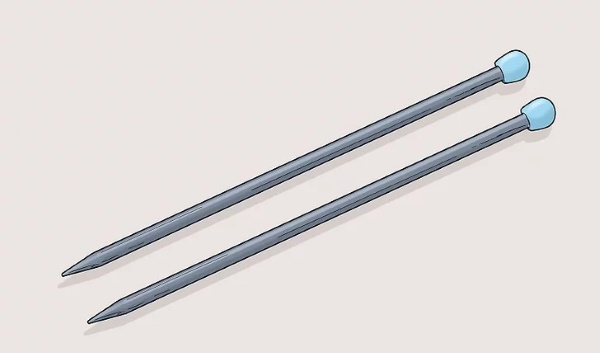
Irish patterns are more embossed and convex when working with wool or semi-wool threads. The needles should be thicker than those indicated on the yarn labels. If the arans are made with tools designed for stocking knitting, the pattern comes out hard and flat. You can take the yarn that is suitable for needles No. 4 or No. 5.
Schemes with description of works
The following descriptions of the Aran patterns are universal for creating:
- tights;
- bags;
- hats;
- scarves;
- sweaters;
- pillows;
- blankets;
- children's sets;
- men's clothing.
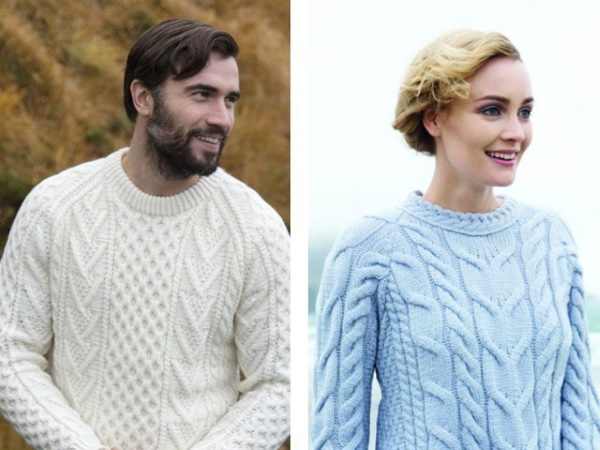
Abbreviations found in decoding of pattern drawings:
- p. – row;
- P., p., pet. – loop;
- auxiliary – auxiliary;
- persons - facial;
- purl – wrong side;
- rab. – working, work;
- add. – additional;
- crossed – crossed;
- next – next;
- pov. – turn;
- pp. – rows, rows;
- purl, purl – wrong side;
- facial – facial;
- connected – connected;
- separate – separate;
- l. – facial, front;
- i. – purl, back;
- s., sp. – spoke;
- Lp – front loop;
- Слп – crossed front loop.
- vm. – together;
- Ip – purl loop;
- DS – additional spoke;
- elm – knitting;
- purl – purl;
- facial - facial;
- deferred – postponed;
- placed – placed;
- stor. – side;
- last – subsequent;
- ext. – additional;
- otv. – otv.
stairway to Heaven
Beautiful pattern.
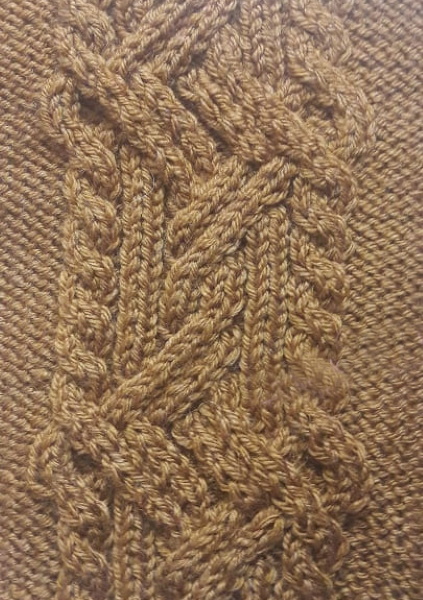
The common pattern is knitted according to the following template:
- In the 1st row, create a rapport from *a pair of loops that are inserted onto the DS behind the working needles, then knit a pair of front loops, followed by two of the same with separate loops, then one purl and front loop and 4 purl*. Then repeat the pattern enclosed in stars to the end of the row.
- In the 2nd row, the repeat should consist of 4 purl stitches, a front and back stitch, 4 front stitches.
- The rapport of the 3rd row goes as follows: 4 knits, a purl, a loop on a separate s., placed in front of the knitting needles, which is then knitted as a front loop after the completed purl loop. Next comes a pair of purl loops and a loop on the DS, left behind the working knitting needles. From this, a purl loop is then made after a pair of knitted front loops. The next pair of loops are placed on a separate s. in front of the knitting needles. They are knitted after the purl loop. Next there should be 2 Ip and a loop on the DS, which is then knitted as a purl after the front loop.
- In the 4th row, the first is four purl stitches, after which they are repeated according to the pattern created on the fabric.
- The repetition of the 5th row begins with a pair of loops on the DS behind the needles, which then after 2 completed front loops should become the same. Next, knit 2 purl, followed by a loop on a separate s. in front of the needles, which after 2 front loops is turned into a purl. After it, knit another pair of the same IP. Next, 2 loops on the DS are placed in front of the needles. From them, after the next purl loop, knit ones are knitted. Then the pattern looks like this: a pair of purl, loop on a separate s. behind the needles, Lp, IP with DS.
- In the 6th row, the loops are knitted according to the knitting pattern.
- In the rapport for the 7th row, after the four Lp, there are 3 Ip, a loop on a separate sp. behind the needles, a pair of Lp, a front loop with DS, 4 Lp, a pair of loops on an auxiliary sp. before knitting, Lp, 2 front loops with DS and a three Ip.
- The loops of the 8th row repeat the previous ones, according to the pattern.
- The rapport of the 9th row begins with a pair of loops on the DS, then go: 2 Knit, a pair of front loops with a separate s., 2 Ip, a loop on an auxiliary s. behind the needles, 2 Knit, a set aside purl, a loop carried separately, in front of the knitting needles, Ip, Knit with the DS, a pair of loops set aside in front of the needles, Ip, 2 front loops with a separate s., a pair of purl.
- In row 10, the loops should repeat the pattern.
- The rapport of the 11th row will be: four Lp, Ip, loop behind the needles, pair of front loops, Ip with deferred s., 2 purl, loop before knitting, Ip, Lp with DS, loop behind the needles, Lp, Ip with deferred s., 2 Ip, pair of loops on aux. s. before work, purl, 2 Lp with DS, Ip, 4 Lp.
- In the 12th row, the loops are made according to the pattern.
- Row 13: *pair of sts behind the worker, 2 Lp, pair of knits with DS, Ip, 2 Lp, purl four, loop behind the worker, Lp, knit with additional s., 4 Ip, pair of knits, Ip*.
- Row 14: repeat pattern.
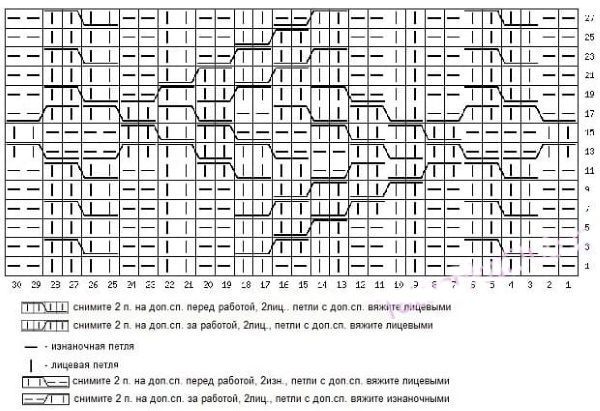
The following rows, up to and including the 39th, are knitted according to the above points, from the 1st to the 14th.
Aran knitting patterns (the knitting patterns of which remind people of ancient secret writing) were essentially Irish amulets and family emblems. Previously, fishermen's wives used special ornamental codes in their needlework, which have survived to this day.
Wavy Mountain
The execution of the main motifs from the diagram is presented in the table:
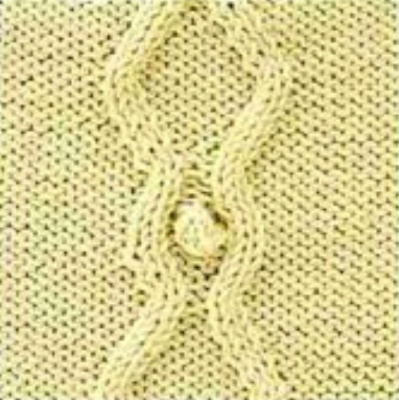
| Element name | Features of implementation |
| Bump (B) | *Lp, Slp, Lp, Slp, Lp* - next. P., p., 5 Sp., p., 5 Lp., p., 2 vm., connection. purl, purl, 2 stitches, knit. purl, p, 3 ins, connection. in Lp |
| 3← | Pair of loops on separate s. before work., Ip, 2 Lp. with DS |
| 3→ | P on separate s. for tie, pair Lp, Ip from deferred loop. |
Knitting the Wave Mountain Aran, which consists of 13 loops:
- On l. row: three and., 3 →, and., 3 ←, three and.
- On i. rr.: execution according to the drawing.
- Pair and., 3 →, three and., 3 ←, 2 and. (No. 3).
- I., 3 →, five I., 3 ←, I. (No. 5).
- 3 →, seven and., 3 ← (No. 7).
- 3 ←, seven and., 3 → (No. 9).
- I., 3 ←, five I., 3 ←, I. (No. 11).
- Pair and., 3 ←, triple and., 3 ←, pair and. (No. 13).
- Troika i., 3 ←, i., 3 ←, troika i. (No. 15).
- Repeat #1.
- Knitting similarity No. 3.
- Pair of i., 2 l., Sh, pair of i., two l., 2 i. (No. 21).
- Again #13.
- Repeat #15.
- Four l., pair i., l., 2 i., four l. (No. 26).
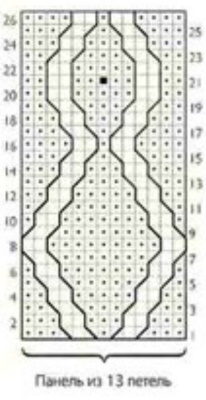
Ready.
Round braid
Elements used in Aran:
- 4 ← — 3 P on DS before knitting, purl, three knits with DS;
- 4 → — loop on DC for work, 3 Lp, purl with DC;
- 5 ← — 3 P on DS before knitting, pair of purl, three Lp with DS;
- 5 → — a pair of sts behind the tie, 2 Lp, two purl with DS;
- 6 ← - three stitches. before work., 3 knits., 3 lp with DS.

Decoding the Aran pattern Round cable (12 sts on the wrong side of the fabric):
- On l. r. – IP, 5 →, 5 ←, IP.
- On and. pp. – Lp, further according to the drawing.
- 4→, four Ip, 4←.
- Three knits., 6 IP, 3 Lp.
- 4←, purl four, 4→.
- Ip, 5←, 5→, Ip.
- 3 Ip, 6←, purl three.
- 3 Rp, 6 IP, three of persons.
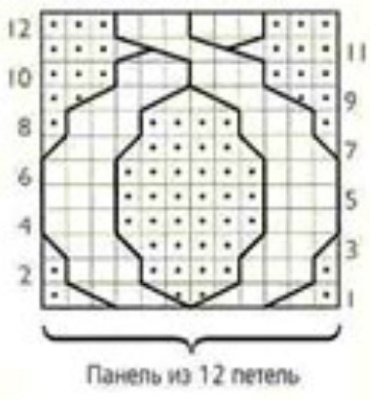
Ready.
Cones in medallions
Aran knitting needles (their knitting patterns seem difficult only at first glance) are knitted in the form of a convex cord. With the help of such an element, various unique combinations are created. The attractiveness of each pattern lies in its density and uniformity.
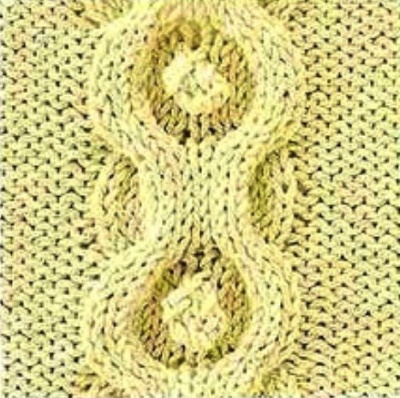
Preview of elements found in the Aran Pinecones in Medallions:
- 6→ - three pets. on DS for elm., 3 l., triple l. with DS.
- 6← - 3 P on DS before work, 3 l., trinity. with dept. With.
- Ш, bump - from the next loop 2 times perform knit and purl turn, then follow the quadruple i., turn, 2 knitting 2 together in i., turn, 2 together in knit.
Analysis of the Aran pattern from a 15-loop panel with Ip:
- In l. pp. under numbers 1, 3, 7, 11, 15 – and., 13 l., and.
- V i. pp. – l., 13 i., l.
- I., 6→, l., 6←, I. (No. 5).
- I., six l., Sh, 6 l., I. (No. 9).
- I., 6←, l., 6→, i. (No. 13).
- Repetition of the first row (No. 16).

Ready.
Tic Tac Toe
Aran, knitted (the patterns for knitting these patterns are quite easy if you understand them well) create, perfectly emphasize the figure. They require different in composition and high-quality yarn. Before knitting ornaments, beginners will have to practice well on ordinary elastic bands and loops.
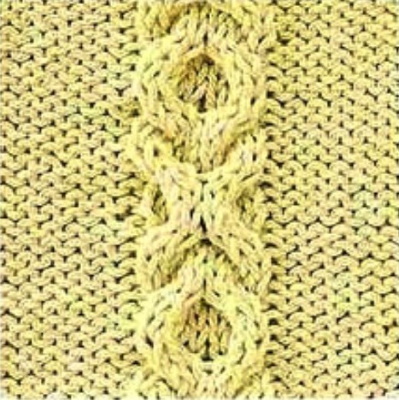
The main elements of the Tic Tac Toe pattern:
- 4← — a pair of loops on the DS before knitting, 2 l., two l. with DS;
- 4→ - pair of p., deferred. per worker, 2 l., couple l. with dept. With.
Rules for knitting an Aran from an 8-loop panel with i loops:
- Eight of L. (No. 1).
- 8 and. (No. 2).
- 4→, 4← (No. 3).
- Eight and (No. 4).
- Next 4 rows repeat Nos. 1-4.
- 8 l. (No. 9).
- Eight and. (No. 10).
- 4←, 4→ (No. 11).
- 8 and. (No. 12).
- Next 4 rows repeat Nos. 9-12.
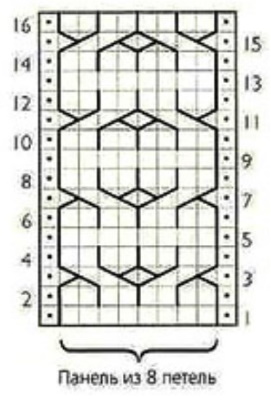
Ready.
Braid
Elemental designations:
- 6→ — three deferred sts on DS for tie, 3 l., three l. with separate s.;
- 6← — 3 sts on auxiliary s. before work, three l., 3 l. with DS;
- 4→ - three stitches. on DS for elm., i., 3 l. from deferred pet.;
- 4← — 3 sts on DS before work, and, three sts with DS.

Making Aran Tape from 20-loop panel with I loops:
- Three l., 4 i., 6→, four i., 3 l. (No. 1).
- In I. pp. knitting is done according to the pattern.
- Repeat 2 times *4←, pair i., 4→* (No. 3).
- 2 times rapport *i., 4←, 4→, i.* (No. 5).
- Pair of i., 6←, four of i., 6→, 2 i. (No. 7).
- 2 times rapport *i., 4→, 4←, i.* (No. 9).
- 2 times rapport *4→, pair i., 4←* (No. 11).
- Three l., 4 i., 6←, four i., 3 l. (No. 13).
- Repetition No. 3 (No. 15).
- Repetition No. 5 (No. 17).
- Pair and., 6→, four and., 6←, 2 and. (No. 19).
- Repetition No. 9 (No. 21).
- Repetition No. 11 (No. 23).
- 2 times rapport *three i., four l., 3 i.* (No. 25).

Then the ornament continues, repeating the rows described above in order.
Celtic ornament
Explanation of the main abbreviations:
- 3 ← — a pair of loops on the DS in front of the needles, purl, two knits from the deferred loops;
- 3 → — loop on separate s. for worker, pair l., i. with DS;
- 4← — two sts on the auxiliary st before knitting, a pair of purl, 2 knits from the deferred sts;
- 4→ — a pair of stitches set aside after knitting, two knit stitches, 2 s. with DS;
- 4 y. ← — two deferred before knitting st., 2 knit sts, knit sts from 2 sts on separate s.
- 4 l. → — place two sts on auxiliary st. behind needles, pair of l., knit with DS.
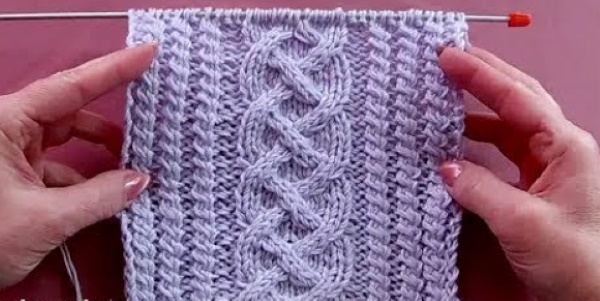
The essence of the Celtic ornament pattern from 24 loops:
- On the front side: *2 purl, 4 crossed front to the right*. Repeat the work enclosed in the asterisks three times (1st row).
- In all I rows, knit stitches are knitted, and purl stitches are purled (2nd and last even rows).
- I., three crossed sts to the right, double repeat *4← and 4→*, 3←, I. (3rd row).
- 3→, and., 2 times *pair of and., 4 ←, two and.*, and., 3← (5th row).
- A pair of knit stitches, two i. stitches, double repeat *4→ and 4←*, a pair of i. stitches and k. stitches (7th row).
- 2 times a pair of knit stitches and purl stitches, a pair of i., 4 knit stitches →, a pair of i., twice a pair of i. and knit stitches (9th row).
- Two knits and one purl, 2 times *4← and 4→*, a pair of purl and knit (11th row).
- Three crossed left loops, i., 2 times *pair purl, 4 k ←, two i.*, purl, 3→ (13th row).
- I., 3←, 2•*4→ and 4←*, 3→, I. (15th row).
- 3-fold repeat *pair of knit stitches, 4 s, two knit stitches* (16th row).

Then repeat from the 1st to the 16th rows.
Knitting Irish patterns involves making various loops and elements. Beginners should first learn to understand the patterns. Only after that do they start making various items with knitting needles. Arans can be used on both women's and men's models. Such weaves are also common on children's sets.
Five-strand aran
Abbreviations found in the diagram:
- 5← — three loops on the DS before knitting, a pair of l., purl with a separate s., and 2 knit. from the same place.
- 5→ — 3 sts on extra needle, pair of knit stitches, purl stitches and 2 sts from extra needle.
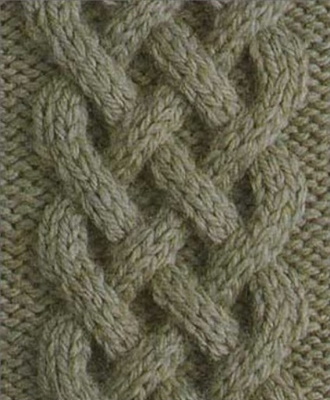
Step by step instructions for creating a 5-strand Aran from 18 stitches:
- In the 1st row, on the front side, knit 2 purl stitches and a rapport of a pair of knit stitches and one purl stitch, which is repeated 5 times, and finished with a purl stitch.
- In the 2nd row and the following even rows there should be: two knits, five times repeat of a pair of purl and one knit, knit.
- The 3rd row consists of: two purl, a pair of knits, a double repetition of the purl and 5←, 2 purl.
- The 5th row is done similarly to the 1st.
- In the 7th row, first knit a pair of knit stitches, then repeat 5→ and purl stitches twice, then do two knit stitches and purl stitches.
- The 8th row should repeat the 2nd.
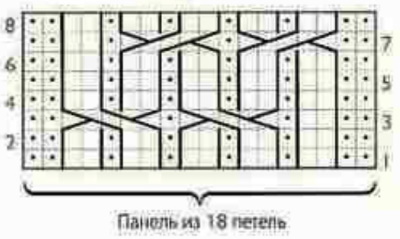
The above steps, from 1 to 8, continue to be performed until the entire pattern is completely knitted.
Simple Aran
To get a classic 14-loop Aran, do the following:
- In the 1st row, not counting the edge ones, knit two knit stitches, 8 knit stitches and a pair of purl stitches.
- Up to and including row 4, knitting is done according to the pattern.
- In the 5th row, begin to cross the cords: after completing 2 i. on the DS, throw the next four loops, knit the remaining ones, and the deferred ones - the same way, the last two sts are performed as purl ones.
- Then, up to row 13, stick to the knitted pattern.
- At 13 p.m. the bundles are twisted again, as before.
- From the diagram it is clear that a braid is formed every 7 rows.
Celtic Braid
The diagram has some components that have been shortened, namely:
- 1st component (K1) - a pair of loops set aside for work, which are knitted purlwise after 3 knits;
- 2nd component (K2) – three loops, put aside before knitting, 2 purl, front loops with DS.
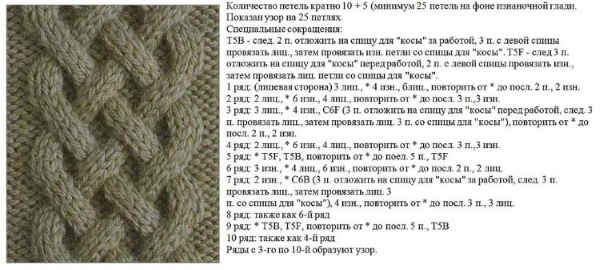
Creating a 25-loop braid:
- Row No. 1 on the right side: *four purl, 6 knit*, pair of i. loops.
- Two knit stitches, *six purl stitches, 4 knit stitches*, three purl stitches (row #2).
- Row 3: three knit stitches, *four purl stitches, 3 set aside before knit stitches, which after 3 knit stitches are knitted as knit stitches*, a pair of purl stitches.
- Repeat row #2.
- *K2+K1*, K2 (row #5).
- Three and. loop, *four knits, 6 purl*, pair of knits (row No. 6).
- Pair of purl, *three sts, put aside for work, 3 knits, knit st with separate st, 4 purl*, Three knits (row #7).
- Knit row #6.
- *K1+K2*, K1 (row #9).
- Repeat row #2.
Secrets for Beginners
Arans are formed by transferring loops on the fabric. This is conveniently done with an additional knitting needle, on which the loops are placed. When transferring inward, it is brought behind the working fabric and the following loops are knitted from the main knitting needle. After this, return to the additional one. At the end, it is necessary to transfer the loops, but before knitting.
It is known that more experienced needlewomen can do without an additional knitting needle.
Aran knitting patterns (knitting patterns are usually memorized so that they can be done automatically later) should look textured and soft, not flat and hard. In order for the patterns to turn out exactly like this, you need to practice a lot on templates, choosing knitting needles of different thicknesses each time.
The first Aran patterns that appeared in ancient times meant:
- family unity (tree of life);
- small islands in the raging ocean waves (grid);
- minor vegetation or algae (moss or "rice");
- fishing ropes (braids);
- trodden paths to the house (chains);
- cliff slopes down to the sea (winding curves).
The principle of performing arans on knitting needles consists of loops:
- cone-shaped, knitted from the previous row;
- enveloping;
- displaced.
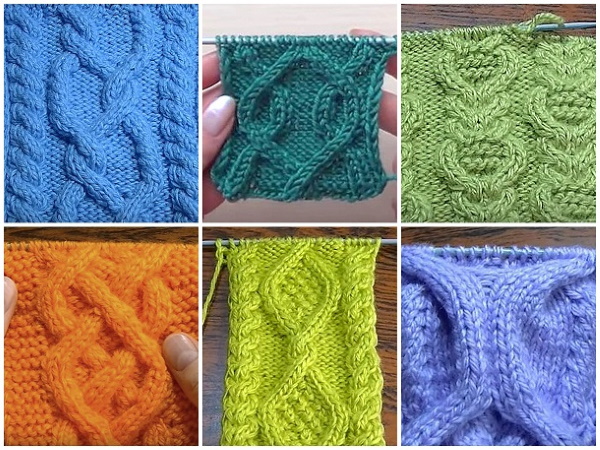
The background pattern on the Aran fabric is often the so-called Irish moss or rice. It is easy to fill the areas between the braids. The fabric with this variation of knitting turns out to be pleasant and relief.
Small or large rice in combination of braids and plaits allows you to form your own new ornaments with a hidden meaning. Light intertwining loops create unimaginable attractive and simple arans. With such techniques, cozy and beautiful products can turn into real talismans for adults and children.
To make it easier for beginners to knit arans, you need to:
- Transfer the studied patterns onto squared paper, drawing the ornament in such a way that on the drawing 1 cell corresponds to 1 loop. Subsequent work with knitting needles is based on the explanations made by hand.
- Before knitting any model with arans, make a sample of it. This is done for training and determining the number of loops for the future item. If necessary, the model can be unraveled at any time and try to create a new one.
- Stick to medium knitting density, as braids always tighten the products. For the same reason, an additional number of loops are added to the knitting at the edges. It is believed that the freer the execution, the looser and more voluminous the Aran will be.
- Redraw the template on paper from a knitted sample with a certain number of loops. Subsequently, you should constantly pay attention to it in order to exclude errors in the execution of the pattern.
- For almost all ornamental motifs, use knit stitches, and for the bases, use purl stitch.
- Use markers to control the number of stitches and limit elements.
- Create your own patterns to improve your knitting technique and enhance your skills.
Forming Irish weaves with knitting needles for beginners is not an easy task. But if you thoroughly understand the patterns for such ornaments, then the time spent will not be a pity at all. After all, arans always look elegant on women's and men's things. Such knitting can also be present on children's clothing.
Video on making arans from knitting needles
Beautiful arans with spices, knitting patterns:
